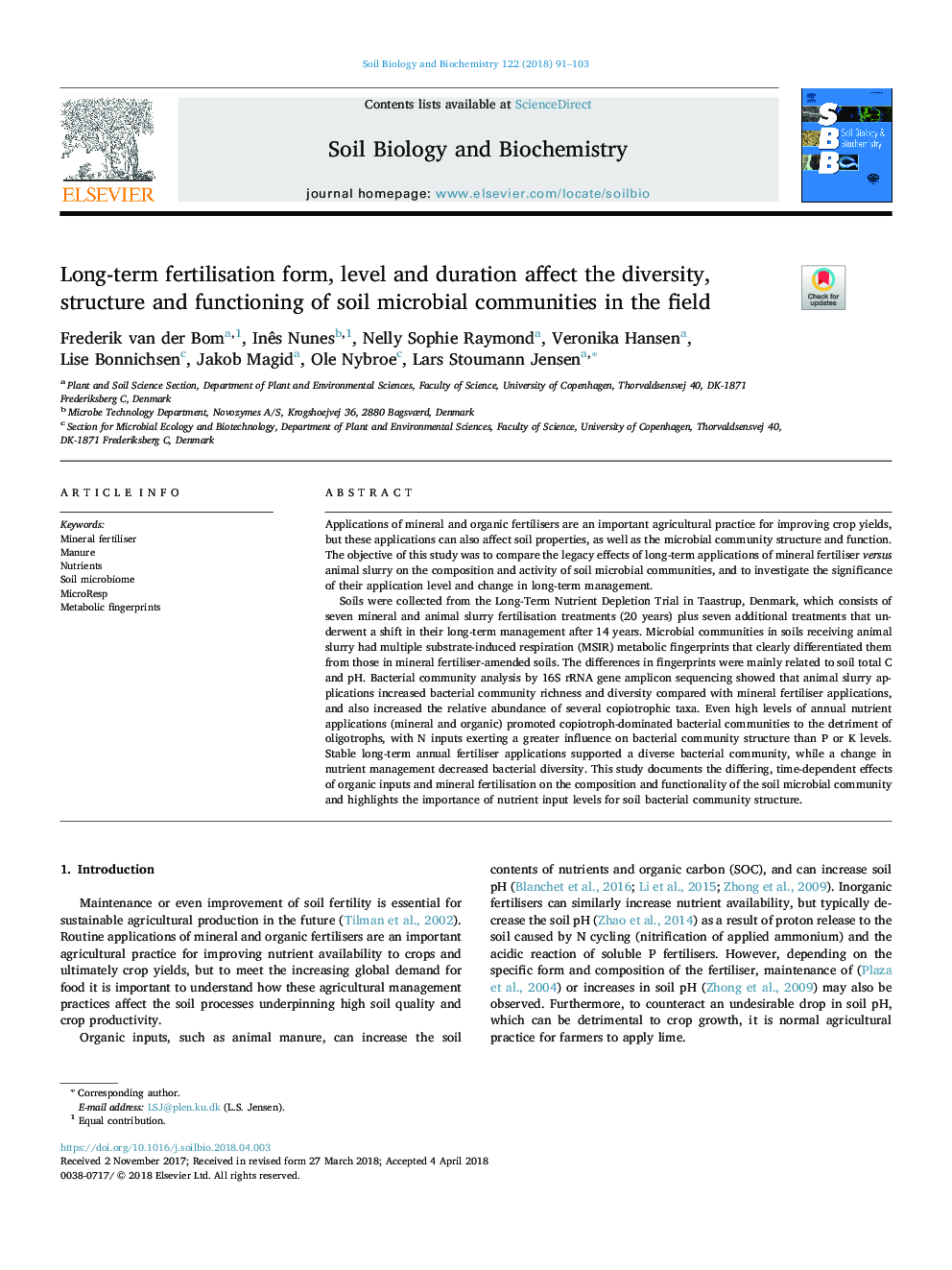| Article ID | Journal | Published Year | Pages | File Type |
|---|---|---|---|---|
| 8362688 | Soil Biology and Biochemistry | 2018 | 13 Pages |
Abstract
Soils were collected from the Long-Term Nutrient Depletion Trial in Taastrup, Denmark, which consists of seven mineral and animal slurry fertilisation treatments (20 years) plus seven additional treatments that underwent a shift in their long-term management after 14 years. Microbial communities in soils receiving animal slurry had multiple substrate-induced respiration (MSIR) metabolic fingerprints that clearly differentiated them from those in mineral fertiliser-amended soils. The differences in fingerprints were mainly related to soil total C and pH. Bacterial community analysis by 16S rRNA gene amplicon sequencing showed that animal slurry applications increased bacterial community richness and diversity compared with mineral fertiliser applications, and also increased the relative abundance of several copiotrophic taxa. Even high levels of annual nutrient applications (mineral and organic) promoted copiotroph-dominated bacterial communities to the detriment of oligotrophs, with N inputs exerting a greater influence on bacterial community structure than P or K levels. Stable long-term annual fertiliser applications supported a diverse bacterial community, while a change in nutrient management decreased bacterial diversity. This study documents the differing, time-dependent effects of organic inputs and mineral fertilisation on the composition and functionality of the soil microbial community and highlights the importance of nutrient input levels for soil bacterial community structure.
Related Topics
Life Sciences
Agricultural and Biological Sciences
Soil Science
Authors
Frederik van der Bom, Inês Nunes, Nelly Sophie Raymond, Veronika Hansen, Lise Bonnichsen, Jakob Magid, Ole Nybroe, Lars Stoumann Jensen,
